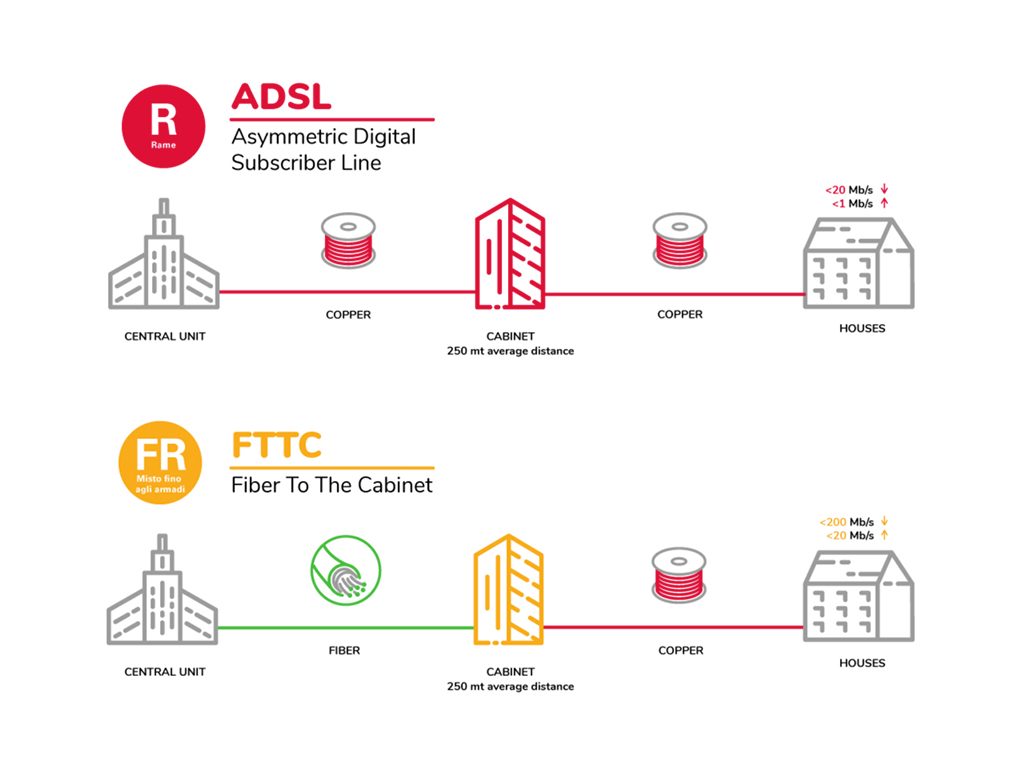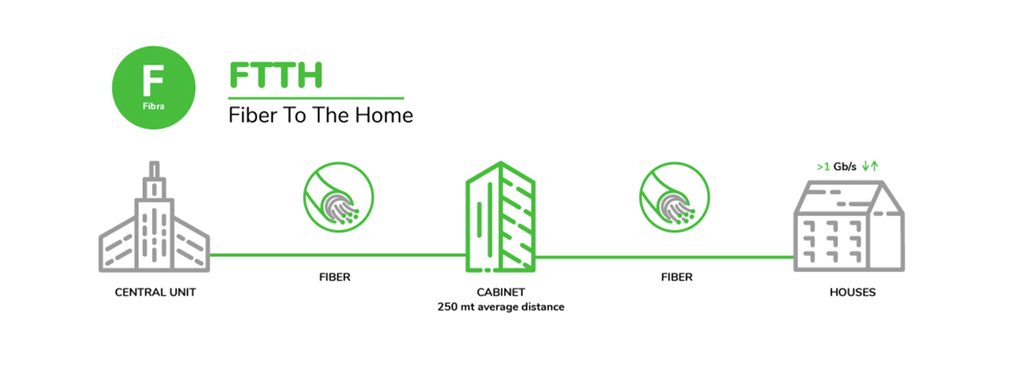Open Fiber brings fiber optics directly to homes, offices, businesses and Public Administrations, ensuring access to the most advanced internetInternet The word comes from the fusion of the English terms international and net, i.e. international network. This term refers to the worldwide computer network that users all over the world can access via a computer to transmit and share data and information. services with unprecedented efficiency and connection stability.
Our ultra-fast networkNetwork In computer language, the term network defines a set of hardware and software devices which, when linked together, enable the exchange and sharing of resources, data or information. In a computer network, the devices that generate, route and terminate data are called network nodes. is built with FTTHFTTH “Fiber to the Home” is the technology that connects POPs, located in exchanges, to end users’ property units with fiber optics. (Fiber to the Home) technology. The entire route, from the exchange to the customer’s home, is fiber-optic, exploiting the full potential of this medium: much faster, more efficient and reliable data transmission. A ‘future-proofFuture-proof Fiber optics is referred to as ‘future-proof’ because it is the only solution that can evolve and support increasing transmission capacities, which in the future may reach up to 40 Gbps, supporting the most advanced services and the potential of new technologies that will arrive in the coming years.’ service that can support the full potential of new technologies that will arrive in the next few years.
Network access systems
The connection to a fixed network is created by laying an underground cable connecting the user’s home or business to the so-called ‘switching box’, which in turn is connected by a second cable to the exchange. The type of cables used to cover these two sections (from the user to the switching box and from the switching box to the control centre) defines the type of connection, which is therefore indicated with different terminology.
In the case of ADSLADSL ADSL, Asymmetric Digital Subscriber Line, is one of the cable broadband technologies which, via a modem, uses the normal copper twisted pair and transforms the traditional telephone line into a high-speed digital connection. This type of connection is referred to as ‘asymmetric’ because it permits two different speeds: a higher download speed to receive data and a limited upload speed to transmit it. Operating in Italy since 2000, the quality of an ADSL connection depends on the consistency of the copper, the distance of the main collector, and, last but not least, whether or not the distributor is connected via fiber optics to the rest of the network., the cables used in the two sections are made entirely of copper, while in the case of FTTCFTTC Fiber To The Cabinet (FTTC) denotes a network architecture partly consisting of a copper ADSL cable and partly of a fiber-optic cable. The former travels the shortest route, connecting the user’s modem to the switching box, while the latter, the fiber cable, completes the route all the way to the exchange. technology, one of the two connections is made of copper and the other of optical fiberOptical fiber A cable made of glass fiber through which a light signal is transmitted over long distances for broadband network access. Compared to copper cables, optical fiber can transmit signals much faster, up to 40 Gigabits per second. It is therefore ideal for quickly transferring large amounts of data; it is also unaffected by external interference (electromagnetic interference, temperature variations, etc.). While fiber optics certainly offers the advantage of fast, high-quality and secure data transmission, its high installation cost is a drawback for network builders. Read the news to find out more: “Optical fiber, what it is and how it works”..

In this architecture, copper sections reduce performance, which is not the case in FTTH networks where optical fiber connects exchanges to commercial buildings, apartment blocks and housing units.








